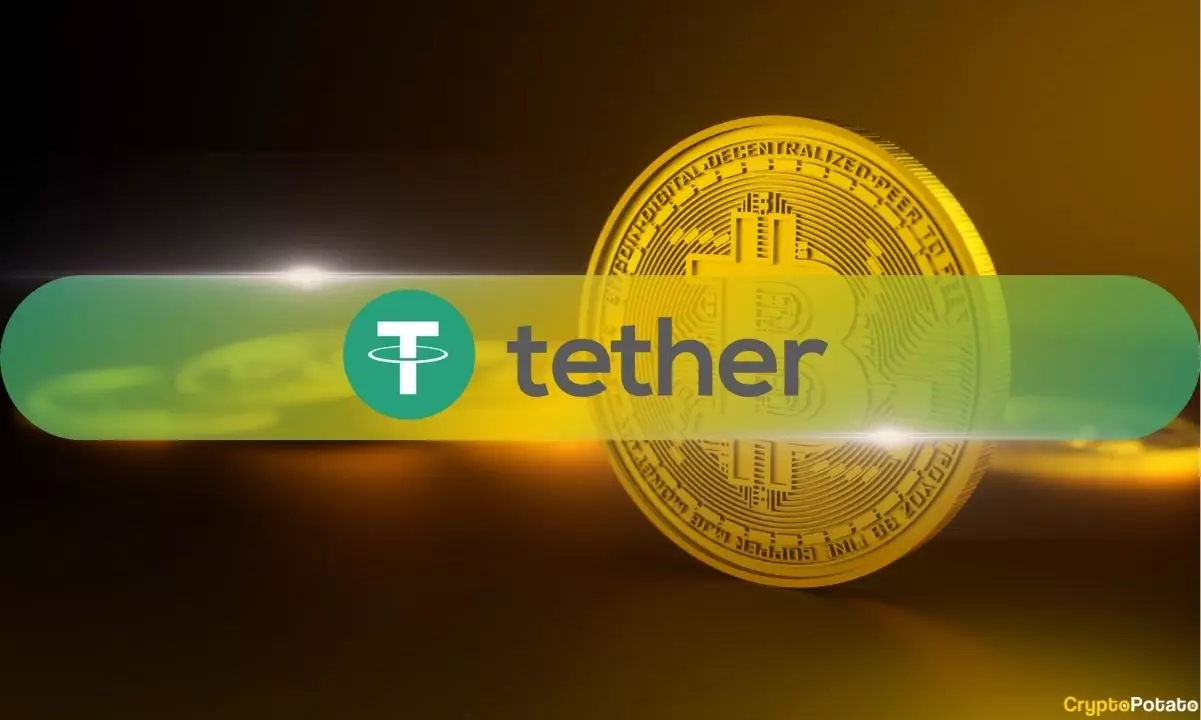In a recent presentation at the PlanB event in Lugano, Switzerland, Paolo Ardoino, the CEO of Tether, unveiled significant details regarding the financial reserves backing the stablecoin USDT. Tether’s asset composition showcases a notable diversification strategy aimed at instilling confidence among users and investors alike. According to Ardoino, the company holds $5.58 billion in Bitcoin, $3.87 billion in gold, and an impressive approximately $100 billion in U.S. Treasury bonds—essentially a wealth-preserving mix intended to safeguard the value of USDT.
This disclosure came at a crucial time when allegations surrounding Tether and a supposed federal investigation in the U.S. are surfacing once again. The strategic presentation coincided with the unveiling of a statue dedicated to Bitcoin’s pseudonymous creator, Satoshi Nakamoto, creating an atmosphere of significance and attention around the event. Ardoino’s decision to be open about the company’s immense holdings provides a counter-narrative to the skepticism existing among critics regarding Tether’s reserve adequacy in relation to USDT’s market capitalization, which has reached approximately $120 billion.
Notably, the announcement comes against the backdrop of a report by the Wall Street Journal, which indicated that Tether is under investigation by the U.S. Attorney’s Office for potential connections to money laundering. Allegations include the possibility that Tether might have been used as a channel for illegal activities by third parties, covering a range of infractions from drug trafficking to financing terrorist organizations. Furthermore, the report raised concerns that Tether could be inadvertently enabling sanctioned activities linked to various countries and groups.
In response to these severe allegations, Ardoino vehemently defended the company’s track record, stating unequivocally that Tether maintains a positive working relationship with law enforcement and has aided in the recovery of assets linked to various criminal enterprises. This response highlights Tether’s commitment to regulatory compliance, although the narrative surrounding its operations remains contentious, especially when it comes to its engagements in geopolitically sensitive regions such as Venezuela and Russia.
The ongoing discourse about Tether’s reserves and operations amplifies the need for greater transparency within the cryptocurrency ecosystem. While Ardoino asserts that Tether’s backing for USDT is solid, the considerable volatility associated with cryptocurrencies naturally incites ongoing scrutiny from both regulatory bodies and the general public. As the crypto market evolves, so too does the demand for clarity on how stablecoins, like Tether, operate and support their pegged value.
Moreover, with allegations citing potential failures in regulatory oversight, the firm’s future credibility hinges on its response to such claims. As Ardoino describes the Wall Street Journal’s portrayal of Tether’s situation as “unequivocally false,” the challenge lies in bridging the communication gap between crypto entities and regulators. The dialogue surrounding the adequacy of Tether’s reserves isn’t merely a financial discussion; it is fundamentally tied to trust—a currency just as valuable as Bitcoin itself in the world we now inhabit.
As Tether continues to navigate its complex legal and reputational landscape, the call for robust transparency and accountability will only grow louder, reminding all stakeholders that in the realm of finance, clarity is paramount.















